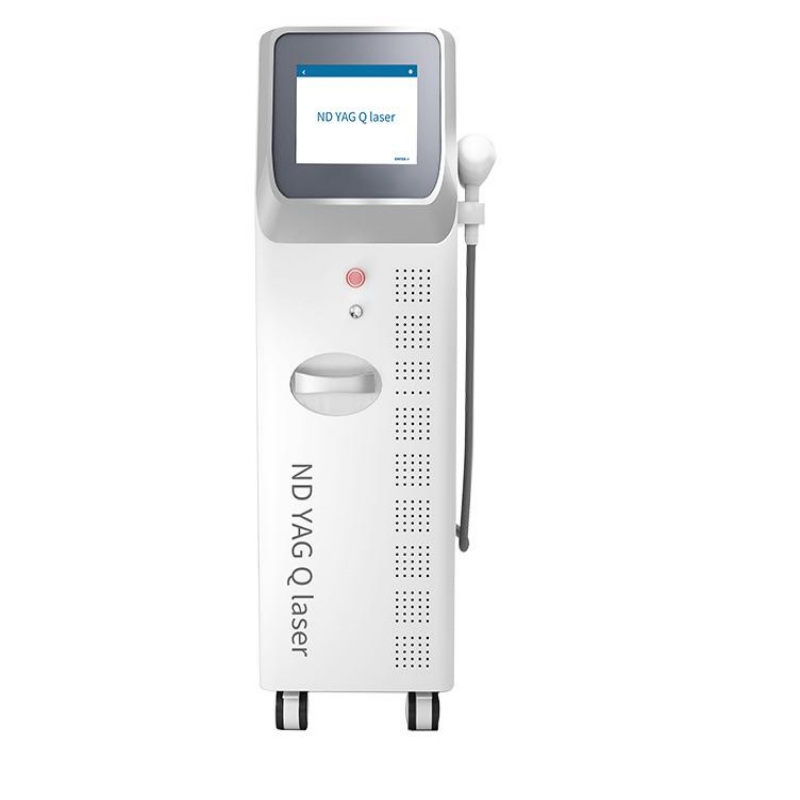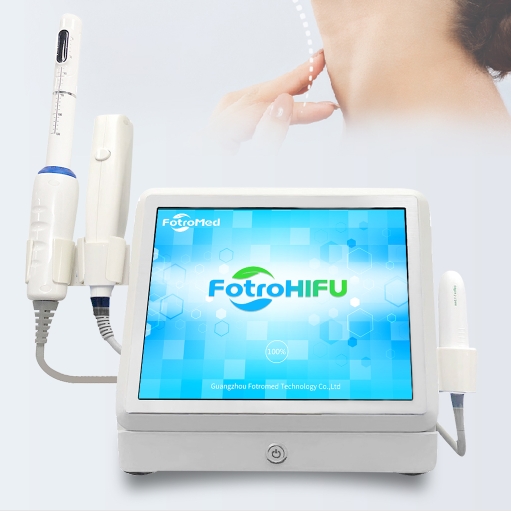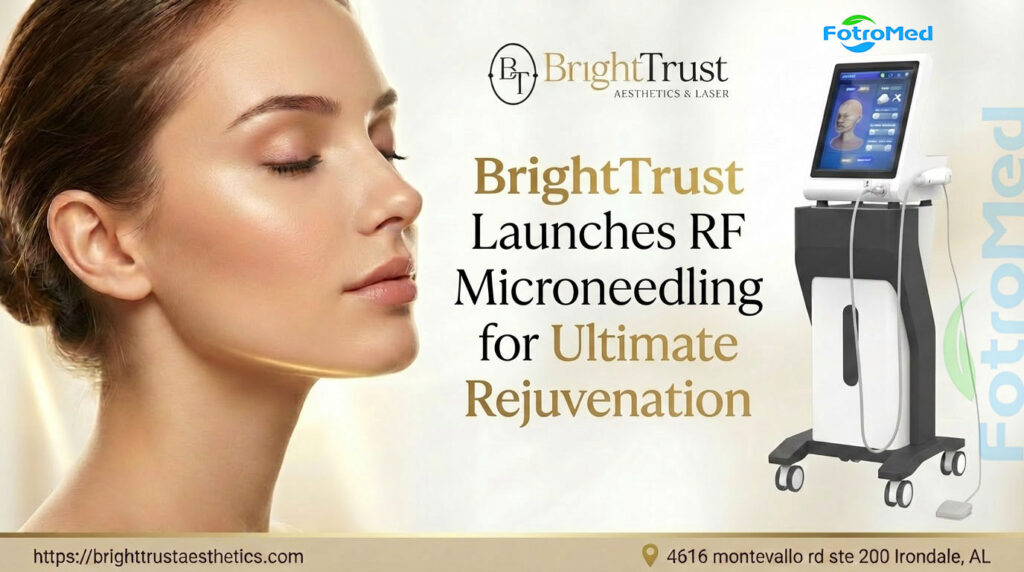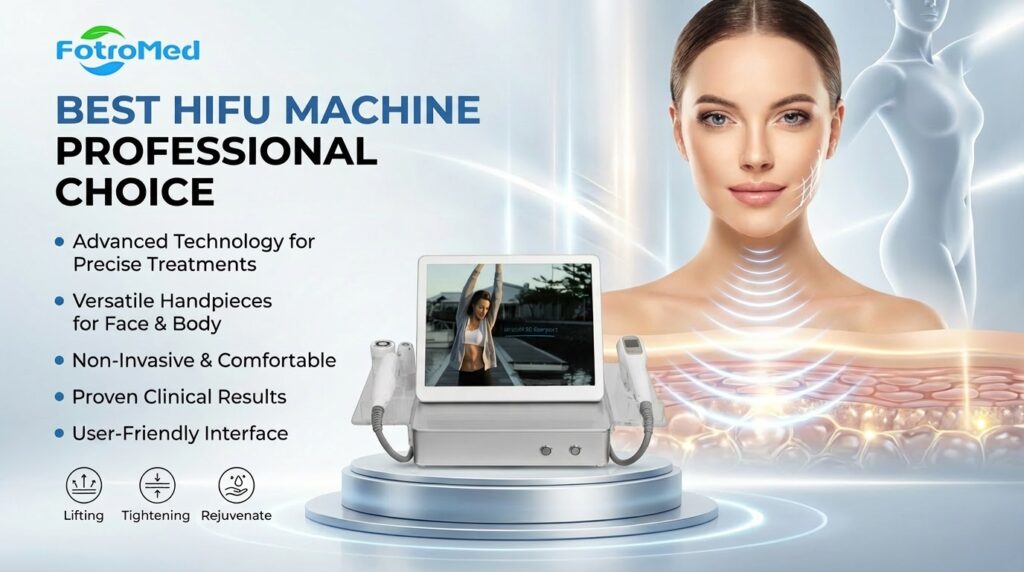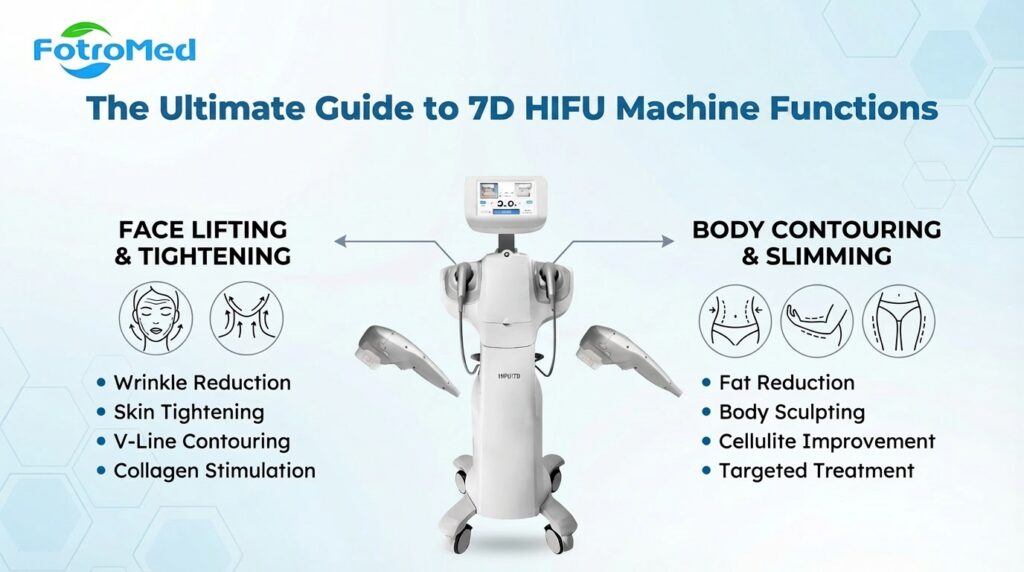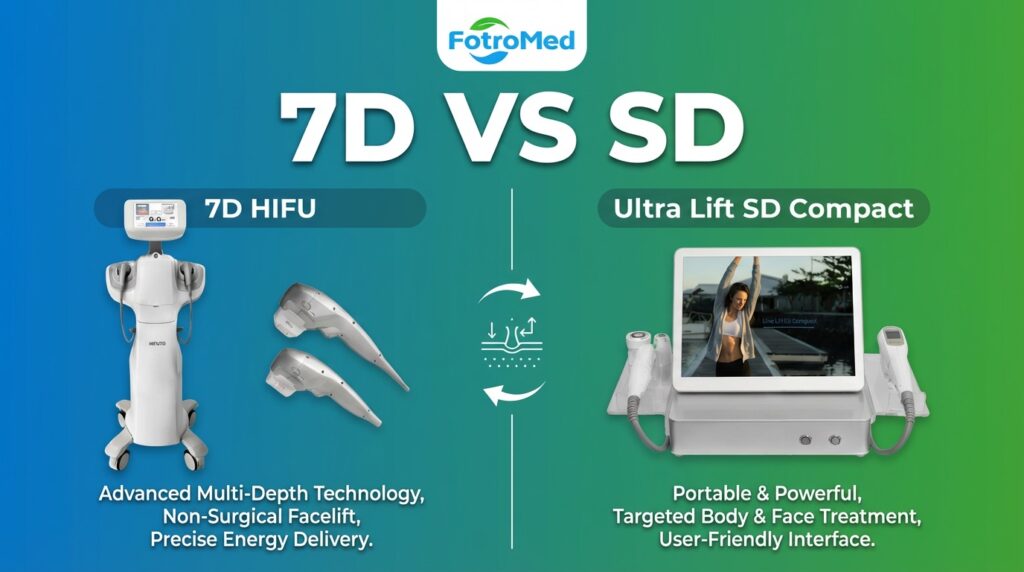HIFU (Hochintensiver fokussierter Ultraschall) und gütegeschaltete Nd-Laser sind beides nicht-invasive kosmetische Behandlungen, Sie unterscheiden sich aber technisch deutlich, Zweck, und Ergebnisse. Hier ist ein detaillierter Vergleich der beiden:
1. Wirkmechanismus:
- HIFU: Verwendet fokussierte Ultraschallwellen, um tiefe Hautschichten anzusprechen, Erhitzen des Gewebes, um die Kollagenproduktion anzuregen. Dies führt zu einer Hautstraffung, Heben, und Faltenreduktion.
- Gütegeschalteter Nd: Ein Laser, der in kurzen Impulsen hochintensives Licht aussendet. Es wirkt durch den Abbau von Pigmenten in der Haut, Dies macht es wirksam bei der Behandlung von Pigmentierungsproblemen (wie Tätowierungen, Sonnenflecken, Pigmentierungsprobleme) und zur Hautverjüngung.
2. Hauptverwendungen:
- HIFU: Wird hauptsächlich zur Hautstraffung eingesetzt, Heben, und Anti-Aging-Zwecke. Es zielt auf schlaffe Haut ab, Falten, und schlaffe Haut in Bereichen wie dem Gesicht, Nacken, und Stirn.
- Gütegeschalteter Nd: Wird hauptsächlich zur Pigmentkorrektur verwendet, Tattooentfernung, und Behandlung pigmentierter Läsionen (z.B., Sommersprossen, Altersflecken, Pigmentierungsprobleme). Es kann auch zur Hautverjüngung und Verbesserung des Hauttonus verwendet werden.
3. Tiefe der Behandlung:
- HIFU: Dringt tief in die Haut ein, zielt auf die tiefe Dermis und das oberflächliche muskuläre aponeurotische System ab (SMAS), was einen Lifting- und Straffungseffekt ermöglicht.
- Gütegeschalteter Nd: Wirkt hauptsächlich auf der Hautoberfläche und den oberen Schichten der Dermis. Es zielt auf Melanin- oder Tattoo-Tintenpartikel ab, dringt jedoch nicht so tief ein wie HIFU.
4. Schmerz und Unbehagen:
- HIFU: Einige Patienten berichten von leichten Beschwerden oder einem Kribbeln während des Eingriffs, da der Ultraschall auf tiefe Hautschichten zielt.
- Gütegeschalteter Nd: Die Laserimpulse können leichte Beschwerden verursachen, oft als ein schnappendes Gefühl beschrieben. Manche Patienten verspüren möglicherweise mehr Beschwerden bei der Behandlung von Tätowierungen oder tieferer Pigmentierung.
5. Erholungszeit:
- HIFU: Minimale Ausfallzeit mit leichter Rötung oder Schwellung, die innerhalb weniger Stunden oder Tage abklingt.
- Gütegeschalteter Nd: Auch minimale Ausfallzeiten für Pigmentierungsbehandlungen, Allerdings kann es zu einer leichten Rötung oder Verdunkelung der behandelten Stellen kommen, bevor sie aufhellen. Die Entfernung einer Tätowierung kann zu einer ausgeprägteren Genesung führen, einschließlich möglicher Krustenbildung oder leichter Blutergüsse.
6. Wirksamkeit:
- HIFU: Wirksam zur Hautstraffung, Heben schlaffer Bereiche, und reduziert feine Linien und Fältchen. Es kann einige Wochen dauern, bis die Ergebnisse vollständig sichtbar sind, da die Kollagenproduktion zunimmt, mit Ergebnissen, die mehrere Monate anhalten.
- Gütegeschalteter Nd: Sehr wirksam zur Behandlung von Pigmentierungsproblemen und zur Entfernung von Tätowierungen. Zur Hautverjüngung, Es kann den Tonus und die Textur verbessern, indem es überschüssiges Melanin aufspaltet, aber es strafft oder hebt die Haut nicht wie HIFU.
7. Sitzungen erforderlich:
- HIFU: Erfordert oft 1-2 Sitzungen, mit Wartungssitzungen, die alle erforderlich sind 6-12 Monate abhängig von den individuellen Ergebnissen.
- Gütegeschalteter Nd: In der Regel sind mehrere Sitzungen erforderlich, insbesondere zur Tattooentfernung oder starken Pigmentierung. Zur allgemeinen Hautverjüngung, 4-6 Es können Sitzungen im Abstand von mehreren Wochen empfohlen werden.
8. Kosten:
- HIFU: Im Allgemeinen teurer pro Sitzung, angesichts der fortschrittlichen Technologie und der länger anhaltenden Wirkung.
- Gütegeschalteter Nd: Günstiger pro Sitzung, Die Anzahl der Sitzungen, die für eine Pigmentierung oder Tattooentfernung erforderlich sind, kann sich jedoch summieren, je nach behandeltem Bereich und Schweregrad.
9. Nebenwirkungen:
- HIFU: Mögliche Nebenwirkungen sind leichte Rötungen, Schwellung, und Kribbeln. Selten, Bei manchen Menschen kann es vorübergehend zu Blutergüssen oder Taubheitsgefühlen kommen.
- Gütegeschalteter Nd: Zu den Nebenwirkungen können Rötungen gehören, Verdunkelung der behandelten Bereiche, vorübergehende Krustenbildung, und leichte Schwellung. Zur Tattooentfernung, es kann zu stärkeren Nebenwirkungen kommen, einschließlich Blasenbildung und vorübergehenden Veränderungen der Hautstruktur.
Abschluss:
- Wählen Sie HIFU wenn Ihr Ziel eine Hautstraffung ist, Heben, und Faltenreduktion. Es wirkt gut bei schlaffer Haut und sorgt für eine jugendlichere Kontur, indem es die Kollagenproduktion in tieferen Schichten stimuliert.
- Wählen Sie Q-Switched Ndwenn Sie Pigmentierungsprobleme haben, Tattooentfernung, oder allgemeine Hautverjüngung aufgrund eines ungleichmäßigen Hauttons oder einer ungleichmäßigen Hautstruktur. Es ist hochwirksam bei Pigmentierung und Tätowierungen, bekämpft jedoch nicht die Hauterschlaffung wie HIFU.
Kundengeschichte der FotoroMed HIFU-Maschine:
Wie FotoroMed Dr. löste. Najehs Herausforderungen mit dem UltraLift SD Compact?
Erfolg mit der HIFU-Maschine: Erweiterung der Dienstleistungen mit Ultralift SD Compact in Belgien
Verwandte Beiträge zu professionellen HIFU-Geräten:
Spitze 5 HIFU-Maschinenhersteller, die eine Überlegung wert sind 2025
Top-HIFU-Maschinen zum Verkauf im Vergleich für Profis
Wie kaufe ich eine HIFU-Maschine?
So verwenden Sie das HIFU-Gerät?
Wie viel kostet ein HIFU-Gerät??
Häufig gestellte Fragen zu HIFU-Geräten
Professionelle HIFU-Geräte vs. HIFU-Geräte für den Heimgebrauch
HIFU-Gerät vs. Hautanalysegerät
HIFU-Maschine vs. fraktionierter CO2-Laser
HIFU-Maschine vs. gütegeschaltetes Nd-Yag
HIFU-Maschine vs. EM-Gesichtsmaschine
Spitze 10 Erschwingliche HIFU-Geräte, die Sie kaufen können
Hydrafacial-Maschine vs. HIFU-Maschine
HIFU-Maschine vs. Microneedling
Hydrafacial-Maschine vs. HIFU-Maschine

